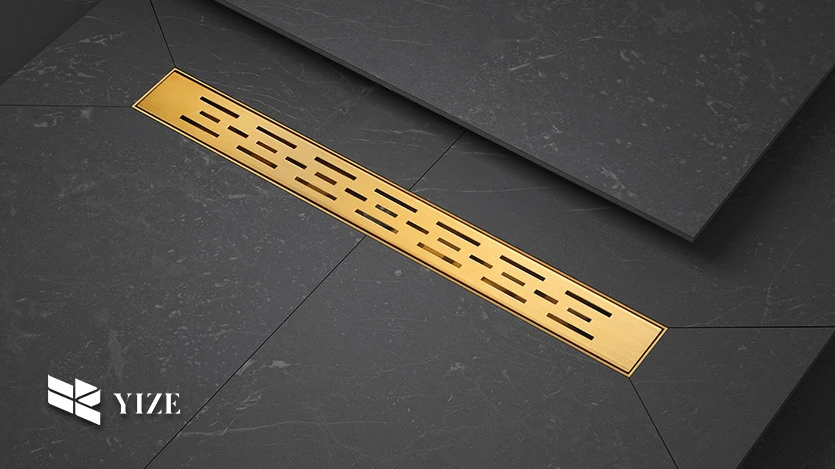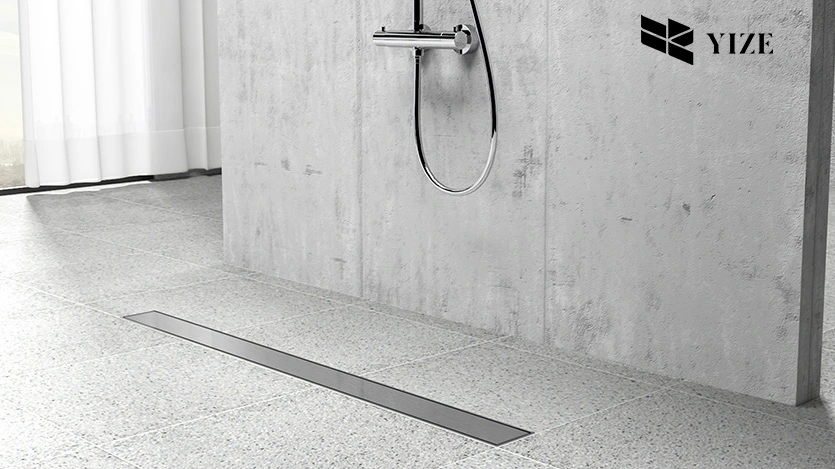
I. Introduction
A drain is one of the most essential features that must be considered when planning a shower installation as its location can affect the overall quality and appearance of the space. Correct location of drains is significant in developing proper drainage systems that will effectively drain water hence avoiding accumulation of water. The purpose of this article will be to offer a step by step guide to selecting the best point for retrofitting the best linear drain in a shower and factors to consider together with points on installing the drain.
II. What to Consider When Specifying a Linear Drain Location?
Choosing the optimal location for a linear drain involves several considerations:
Shower Size and Shape
The size and shape of the shower are crucial to the position of the drain as well since it directly affects the structure. While this design will work quite well for most shower bases, larger showers may need more careful installation to make sure every droplet travels towards the drain. In comparison to square or custom shower bases, rectangular ones provide varied installation opportunities.
Floor Slope and Pitch
The floor must be correctly slopped in a means to ensure that the water is well drained. The location and disposition of the slope will determine how it can be drained through the use of the slope drain. In most cases, they advise the use of ¼ inch per foot slope to allow excess water to drain freely.
Plumbing Accessibility
The current installation of plumbing may reduce the viable choices for the positioning of the drain. For the same reasons, it’s much better to pay attention to where the plumbing lines are to be placed in order to minimize the need for rerouting, which can be quite expensive and lengthy.
Aesthetic Preferences
Another factor that dictates the shower drainage system is the location of the drain, which has an impact on the shower’s aesthetics. The placements can be quite unobtrusive and can merge with shower design, or, they can be more visible.
III. What are the Common Location Options for Installing Linear Drains?
Along the Shower Wall
Advantages
- Cuts the dice into a modern and glamorous appearance.
- It is less challenging to impose a consistent floor slope.
- This is because it minimizes the need for cutting tiles into intricate designs or shapes.
Disadvantages
- May need considerable re-plumbing to achieve desired configuration.
- Difficult to reach and clean at some occasion.
Suitable Scenarios
- Allows water to flow down the single sloping wall through a shower tray.
- Best suited in making modern and minimalist parts of homes.
In the Center of the Shower
Pros
- Symmetrical and visually balanced.
- Ensures proper distribution of water all over the plant.
Cons
- The installation of tiles demands tight substrate fit and floor gradients.
- More complex to install as compared to the TPO membranes and also when it comes to its waterproofing capabilities.
Best Choice When
- The shower compartment is spacious and balanced with an equal division of the space.
- A more or less equal, central dominance is the ideal.
Corner Placement
Benefits
- Utilizes otherwise unused space.
- Can be easier to connect with already available pipes..
Potential Challenges
- May not reach the required temperatures within the shortest time possible when in larger showers.
- Generally, they can be less attractive where some designs are concerned.
IV. What to Consider When Installing a Linear Drain in the Center?

- Waterproofing Requirements: Plumbing installations, particularly those involving a central drainage system, need to be properly sealed to avoid water seepage. This include the application of waterproof membranes and making sure that seams and edges are well covered.
- Tile Layout and Cutting: Having a central drain requires planning of the floor tile patterns appropriately and in the right manner. It is easy to imagine how tiles have to be custom-made to be placed around the drain and still look neat and professional.
- Drain Connection and Piping: To ensure that the water flows correctly, proper connection of the drain to existing plumbing structures should be done carefully. This could encompass rearranging some pipes and safeguarding all joints from leaking.
V. How to Install a New Linear Shower Drain?
Tools and Materials Needed
- Linear shower drain kit
- Waterproofing membrane
- Tile saw
- Level
- Mortar and trowel
- PVC pipes and fittings
- Silicone sealant
Step-by-Step Installation Process
- Plan the Layout: Decide on the best place taking into consideration the factors above.
- Prepare the Floor: The subfloor must be free from any debris, have no uneven spots or high spots and must be sloped in the right manner.
- Install the Drain: Installation of the drain involves fixing it to the preferred position and fitting it to the plumbing system.
- Apply Waterproofing: A waterproof membrane should be applied on the shower floor and walls to prevent water leaks.
- Tile the Floor: Ensure that you carefully cut tiles and then place them in a manner that has a slope towards the drain.
- Seal Joints: They should glue all edges and junctions using a high-quality silicone sealant.
Common Pitfalls to Avoid and How to Troubleshoot Installation Issues
- Improper Slope: Check that the surface is marbled and slopes down towards the drain.
- Leaks: Self-check all seals and connections that are related to waterproofing and water supply systems.
- Tile Alignment: See that the tiles are cut properly and are placed in such a manner that there is no unevenness in the floor.
VI. Where to Buy the Best Linear Shower Drain?
While buying a linear drain, the best approach is always to go for the best companies to avoid counterfeit and quack products. YZDRAIN has a reputation for selling luxurious linear drains with different designs and dimensions to match shower designs. Read customer reviews and look for differences in the programs to identify what is most suitable to you. Some companies sell installation packages, which reduces the time taken and helps in having a professional person install the drain.
VII. Conclusion
Choosing the position of the best linear drain in a shower depends on the size of your shower, the slope of the shower floor, the water supply and drain lines, and the type of drain you prefer. Overall, each placement option has its strengths and weaknesses, but correct planning and design choices will allow to combine functionality and minimalist aesthetics. By assessing such factors, you can make a decision, which can suit your needs and preference as per your discretion.
Frequently Asked Questions (FAQs)
Can I install a linear drain in an existing shower?
Yes, but the flooring and the plumbing for the cabinetry may have to be changed considerably.
How frequently should I clean my linear drain?
Proper cleaning is required every few months to avoid these blockages and ensure proper flow of water.
What are the best materials for linear drains?
The best material is the stainless steel that is famous for its firmness and total non-susceptibility to rust.
